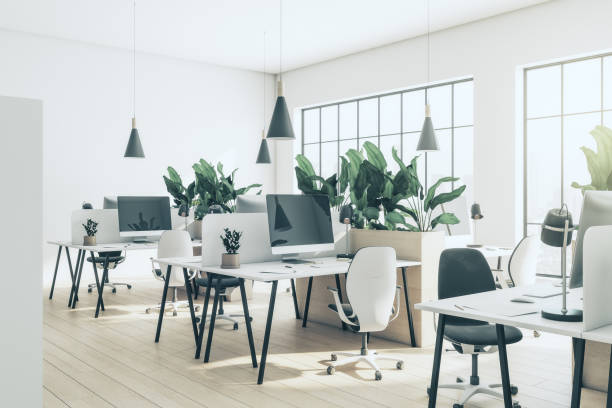Introduction to Modern Office Table
In the dynamic landscape of contemporary workspaces, the office table has undergone a significant transformation. The traditional image of a simple, utilitarian desk has given way to a new era of modern office table that seamlessly blend style, functionality, and ergonomics. As businesses adapt to evolving work trends and prioritize employee well-being, the design and features of office furniture, particularly the office table, have become pivotal in creating a conducive and inspiring work environment.
I. The Shift towards Ergonomics
One of the most notable developments in modern office tables is the heightened emphasis on ergonomic design. Recognizing the impact of prolonged sitting on health, contemporary office tables are crafted with a keen focus on providing comfort and support. Adjustable height features, a hallmark of ergonomic design, allow users to customize their workspace to suit individual preferences, promoting better posture and reducing the risk of musculoskeletal issues.
Moreover, the integration of sit-stand desks has gained popularity in response to the growing awareness of the detrimental effects of prolonged sitting. These desks empower employees to switch between sitting and standing positions, promoting movement throughout the workday and enhancing overall well-being.
II. Aesthetics Meets Functionality
In the modern office landscape, aesthetics are no longer sacrificed for functionality. Office tables have become a focal point in interior design, reflecting the company’s brand identity and contributing to a cohesive and inspiring atmosphere. Sleek, minimalist designs with clean lines and premium materials are prevalent, creating a sophisticated and contemporary look that resonates with the ethos of progressive workplaces.
Materials like glass, metal, and high-quality laminates are now commonly used in the construction of office table, not only for their durability but also for the visual appeal they bring to the workspace. The integration of technology is seamlessly embedded in the design, with features such as built-in charging ports, cable management systems, and discreet storage solutions, ensuring a clutter-free and organized workspace.
III. Collaborative Workspaces
The traditional notion of isolated workstations is giving way to collaborative workspaces, and modern office tables are at the forefront of this evolution. Tables designed for collaborative work foster a sense of community and facilitate teamwork. Modular designs that allow for easy reconfiguration of the workspace, along with integrated power sources for electronic devices, promote a fluid and adaptable environment where employees can seamlessly transition between individual tasks and group projects.
Additionally, the incorporation of multifunctional furniture, such as conference tables with integrated multimedia capabilities, exemplifies the shift towards versatile and collaborative work settings. These tables support dynamic meetings, presentations, and brainstorming sessions, enhancing the overall productivity and creativity of the workforce.
IV. Sustainability and Corporate Social Responsibility
The modern office table is not only a reflection of contemporary design trends but also an embodiment of corporate social responsibility. Sustainability has become a key consideration in the production of office furniture, with companies increasingly opting for eco-friendly materials and manufacturing processes. From responsibly sourced wood to recyclable metals, the materials used in modern office tables are chosen with a commitment to minimizing the environmental impact.
Moreover, the durability and longevity of these tables contribute to sustainability by reducing the need for frequent replacements. Companies are recognizing the value of investing in high-quality, durable office furniture as a means of both reducing waste and showcasing their dedication to sustainable practices.
V. Technological Integration
The integration of technology into office table design goes beyond the inclusion of charging ports and cable management. Smart desks equipped with sensors and connectivity options are becoming prevalent, offering features like height adjustment based on user preferences, reminder systems for ergonomic breaks, and even data analytics to optimize workspace utilization.
These technologically advanced tables not only enhance the user experience but also provide valuable insights for facility management. The data collected can be used to optimize office layouts, improve energy efficiency, and create an overall workspace that aligns with the evolving needs of the workforce.
Conclusion
The modern office table has evolved far beyond its conventional role as a utilitarian piece of furniture. It is now a symbol of the changing nature of work and a testament to the prioritization of employee well-being, collaboration, and sustainable practices. As businesses continue to adapt to the demands of a dynamic work environment, the design and functionality of office tables will undoubtedly play a crucial role in shaping the future of workspaces. With an amalgamation of ergonomic considerations, aesthetic appeal, collaboration features, sustainability, and technological integration, the modern office table stands as a multifaceted cornerstone of the contemporary workplace.




